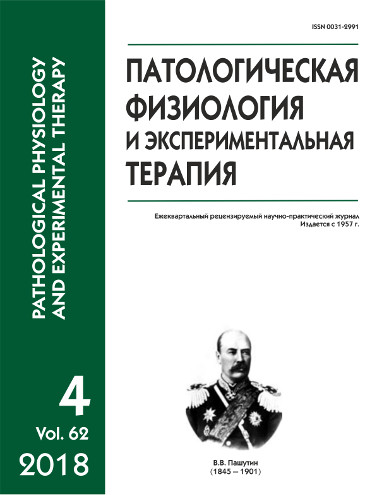New aspects of the energy-tropic action of mexidol
Abstract
Mitochondriogenesis and angiogenesis are crucial neuroprotective mechanisms that increase the resistance of nervous tissue to hypoxia/ischemia conditions. Currently, pharmacological induction of mitochondrial biogenesis is one of the most promising and actively developed approaches for the correction of ischemic and post-ischemic disorders, neurodegenerative diseases and cardiopathies. Revealing the fact of stimulation of mitochondriogenesis with standard neuroprotective drugs will significantly expand the understanding of their therapeutic potential and principles of application. The aim of the research was to study the effect of the neuroprotective succinate-containing drug mexidol on the expression of catalytic subunits of the respiratory enzymes of mitochondria, ATP-synthase and vascular endothelial growth factor in the cerebral cortex of rats with inborn differences in resistance to oxygen deficiency. Methods. The study was carried out on white mongrel rats-males injections of mexidol (40 mg/kg, intraperitoneally) were performed daily for 20 days. The expression level of the catalytic subunits of the respiratory enzymes of mitochondria and ATP-synthase, vascular endothelial growth factor and succinate receptor in the tissue of the cerebral cortex was assessed by immunoblotting. The total resistance of the organism to acute hypoxia was tested in a hypobaric chamber with an atmosphere underpressure corresponding to 190 mm Hg (3% O₂). Results. During the injection course of mexidol, there was an increase in the level of catalytic subunits of the respiratory enzymes of mitochondria (NDUFV2, SDHA, cyt b, COX1), ATP-synthase (ATP5A), vascular endothelial growth factor (VEGF) and succinate receptor (SUCNR1), especially pronounced in rats with low-resistance to hypoxia. Conclusion. The study revealed for the first time the involvement of the succinate-containing drug mexidol in the mechanisms of induction of enzymes of the energy-producing system of the mitochondria of the cerebral cortex, which significantly expands the existing ideas about the mechanisms of its energy-tropic action.






